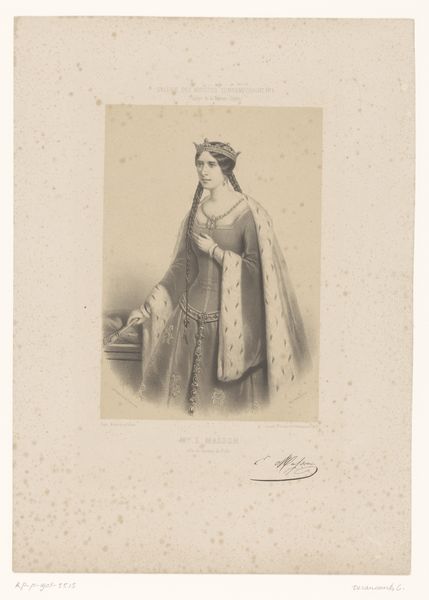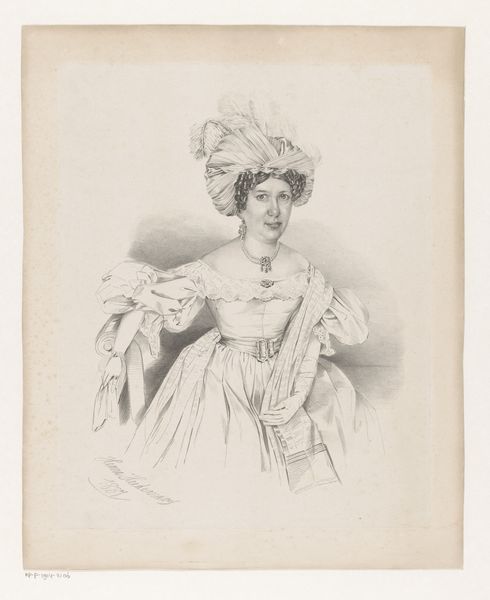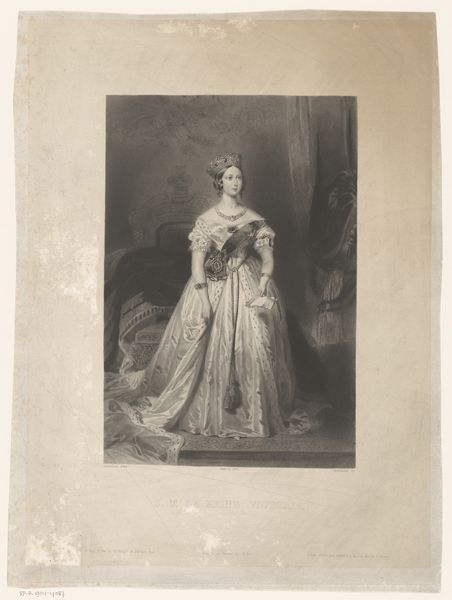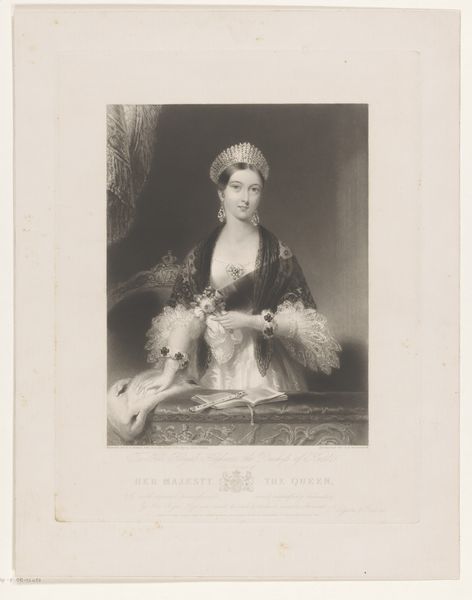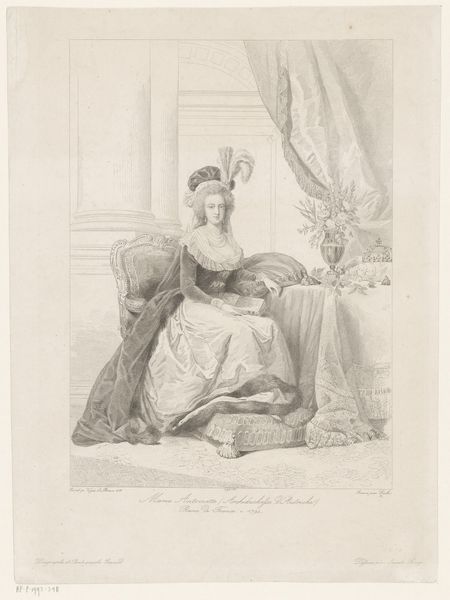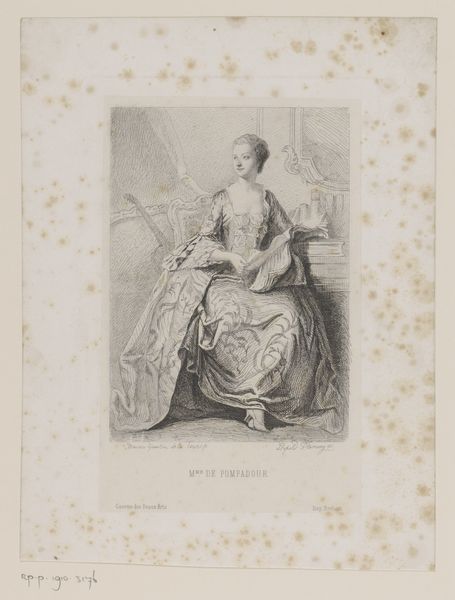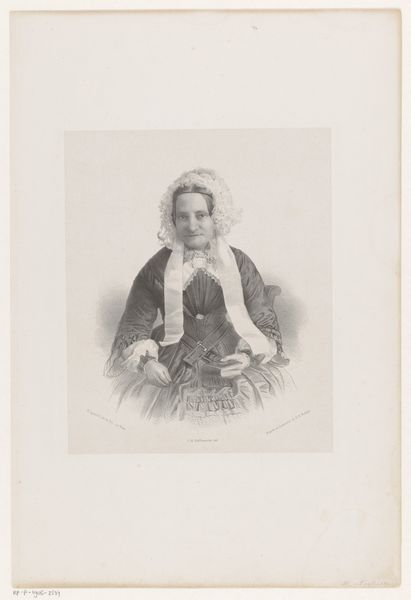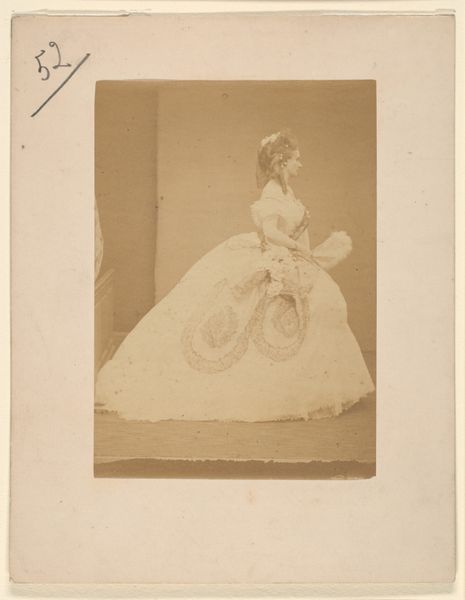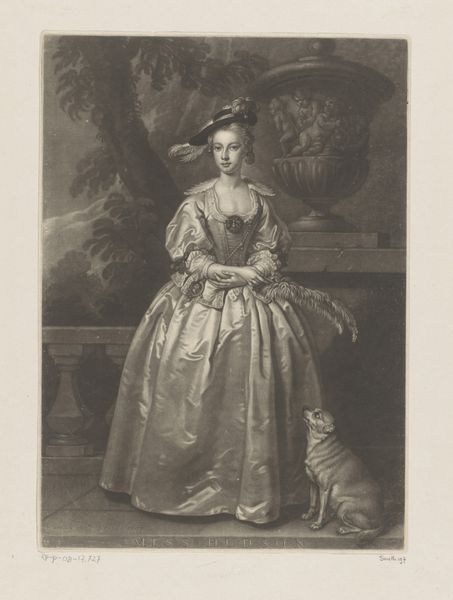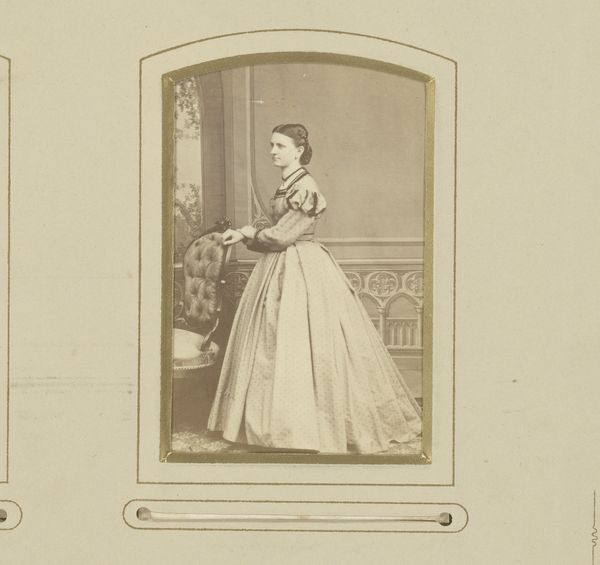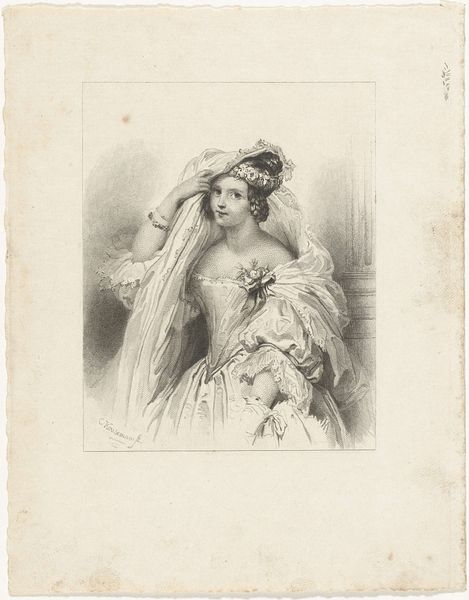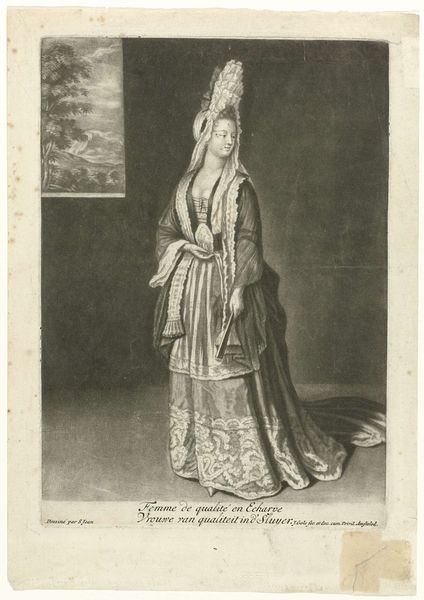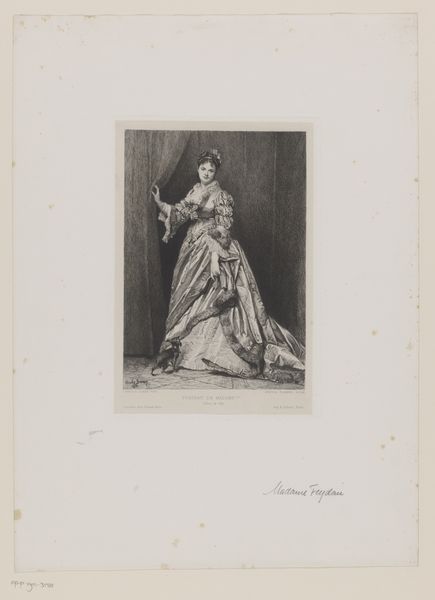
print, woodcut, wood-engraving, engraving
#
portrait
# print
#
old engraving style
#
woodcut
#
united-states
#
wood-engraving
#
engraving
#
realism
Dimensions: 7 x 5 1/8 in. (17.78 x 13.02 cm) (image)12 5/16 x 9 1/16 in. (31.27 x 23.02 cm) (sheet)
Copyright: Public Domain
William B. Closson made this portrait of Jenny Lind using a wood engraving on paper. Closson wasn’t necessarily trying to imitate painting or drawing here. Instead, the graphic quality of the print is highlighted. Look closely, and you’ll see how the image is built up from tiny lines and dots meticulously carved into the woodblock. This process, demanding both precision and patience, highlights the labor involved in its creation. The stark contrast between light and shadow, achieved through varying the density of the engraved marks, gives the portrait a distinctive visual texture. Wood engraving, as a medium, was closely tied to the rise of mass media in the 19th century. It allowed for the relatively inexpensive reproduction of images in books, newspapers, and magazines, making art accessible to a wider audience. In that sense, this portrait of the famous singer Lind reflects the democratization of culture during that era. So, next time you encounter a print, consider not just the image it conveys, but also the process and the social context that brought it into being. It’s a reminder that art is not just about individual genius but also about the skilled work of making.
Comments
No comments
Be the first to comment and join the conversation on the ultimate creative platform.
